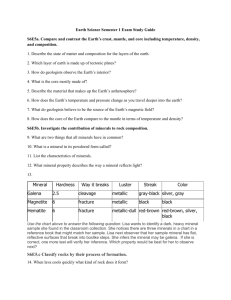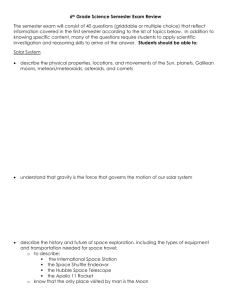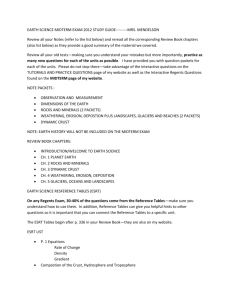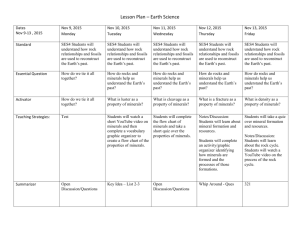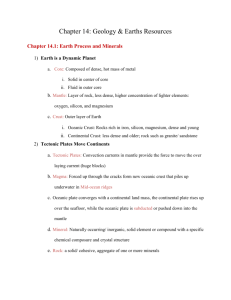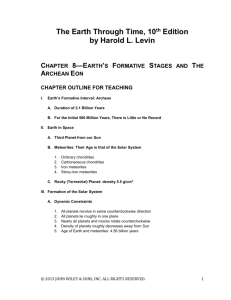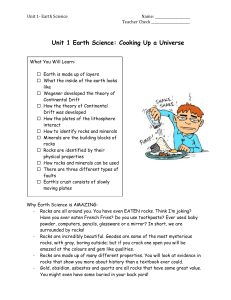Earth Science 1 Study Guide 1. There are bodies of water found on
advertisement
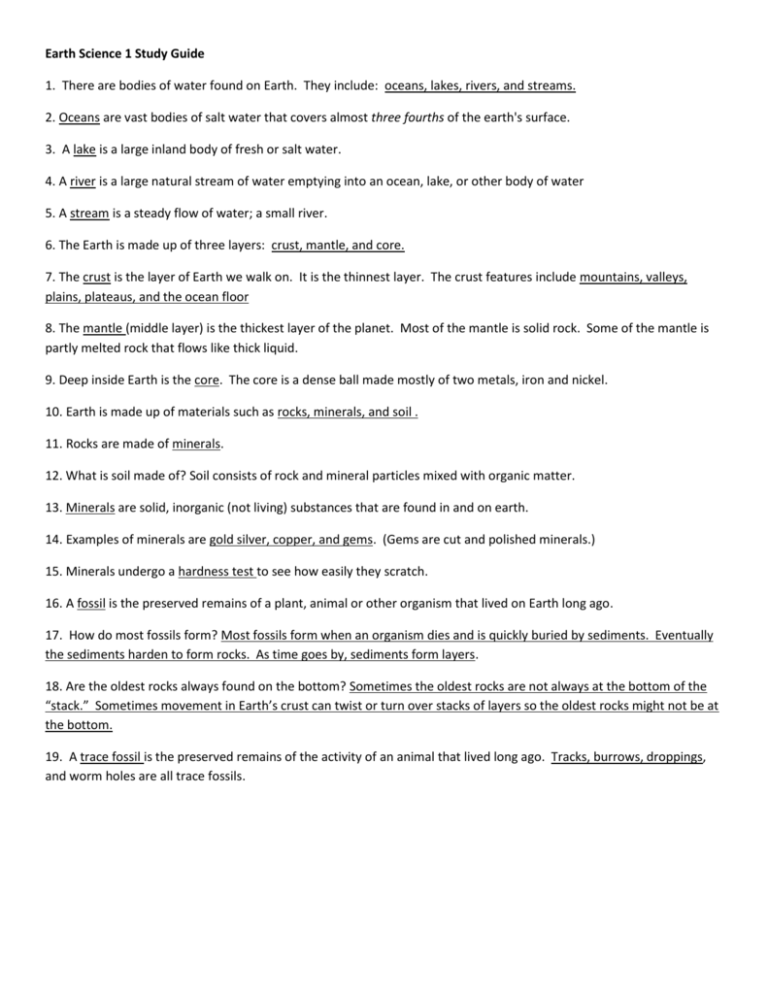
Earth Science 1 Study Guide 1. There are bodies of water found on Earth. They include: oceans, lakes, rivers, and streams. 2. Oceans are vast bodies of salt water that covers almost three fourths of the earth's surface. 3. A lake is a large inland body of fresh or salt water. 4. A river is a large natural stream of water emptying into an ocean, lake, or other body of water 5. A stream is a steady flow of water; a small river. 6. The Earth is made up of three layers: crust, mantle, and core. 7. The crust is the layer of Earth we walk on. It is the thinnest layer. The crust features include mountains, valleys, plains, plateaus, and the ocean floor 8. The mantle (middle layer) is the thickest layer of the planet. Most of the mantle is solid rock. Some of the mantle is partly melted rock that flows like thick liquid. 9. Deep inside Earth is the core. The core is a dense ball made mostly of two metals, iron and nickel. 10. Earth is made up of materials such as rocks, minerals, and soil . 11. Rocks are made of minerals. 12. What is soil made of? Soil consists of rock and mineral particles mixed with organic matter. 13. Minerals are solid, inorganic (not living) substances that are found in and on earth. 14. Examples of minerals are gold silver, copper, and gems. (Gems are cut and polished minerals.) 15. Minerals undergo a hardness test to see how easily they scratch. 16. A fossil is the preserved remains of a plant, animal or other organism that lived on Earth long ago. 17. How do most fossils form? Most fossils form when an organism dies and is quickly buried by sediments. Eventually the sediments harden to form rocks. As time goes by, sediments form layers. 18. Are the oldest rocks always found on the bottom? Sometimes the oldest rocks are not always at the bottom of the “stack.” Sometimes movement in Earth’s crust can twist or turn over stacks of layers so the oldest rocks might not be at the bottom. 19. A trace fossil is the preserved remains of the activity of an animal that lived long ago. Tracks, burrows, droppings, and worm holes are all trace fossils. Earth Science 1 Study Guide 1. There are bodies of water found on Earth. They include: __________________________________________________________________________________. 2. ______________ are vast bodies of salt water that covers almost three fourths of the earth's surface. 3. A ____________ is a large inland body of fresh or salt water. 4. A _____________ is a large natural stream of water emptying into an ocean, lake, or other body of water 5. A _________________ is a steady flow of water; a small river. 6. The Earth is made up of three layers: _____________________________________________. 7. The _______________ is the layer of Earth we walk on. It is the thinnest layer. The crust features include _____________________________________________________________________________ 8. The _____________________ (middle layer) is the thickest layer of the planet. Most of the mantle is solid rock. Some of the mantle is partly melted rock that flows like thick liquid. 9. Deep inside Earth is the ___________________. The core is a dense ball made mostly of two metals, iron and nickel. 10. Earth is made up of materials such as _________________________________________________ . 11. Rocks are made of _______________________________. 12. What is soil made of? ______________________________________________________________. 13. ________________ are solid, inorganic (not living) substances that are found in and on earth. 14. Examples of minerals are _________________________________________. (Gems are cut and polished minerals.) 15. Minerals undergo a ________________________________ to see how easily they scratch. 16. A _________________________ is the preserved remains of a plant, animal or other organism that lived on Earth long ago. 17. How do most fossils form? __________________________________________________________________________________________________ ________________________________________________________________________ 18. Are the oldest rocks always found on the bottom? __________________________________________________________________________________________________ ________________________________________________________________________ 19. A _______________________________ is the preserved remains of the activity of an animal that lived long ago. 20. _______________________________________________________, and worm holes are all trace fossils. Name: ______________________________________________________________ Date ______________ Earth and space Science 1 Test


